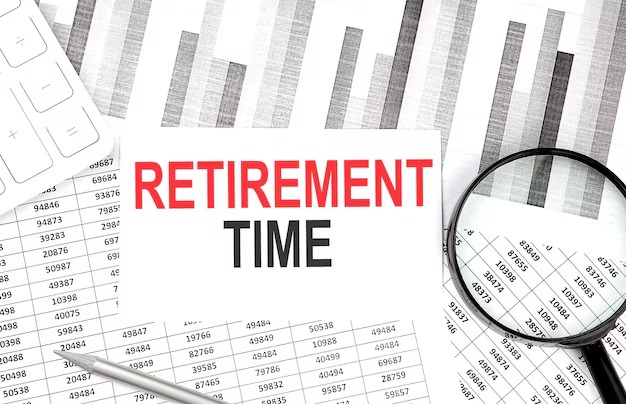Navigating the Inflation Landscape: How Do Pensions Stack Up?
For those who rely on a pension, understanding how these funds interact with inflation can be a critical part of financial planning. Inflation, the increasing cost of goods and services over time, affects everyone, but it can be especially significant for retirees living on a fixed income. So, the big question is, "Do pensions increase with inflation?" This article explores this nuanced topic from various angles to provide a comprehensive overview.
🎯 Understanding Pensions and Inflation
Pensions are a common form of retirement income. They promise a steady stream of income after you stop working, often through employer-sponsored plans. However, a pension's buying power can diminish over time if its growth is outpaced by inflation. Let's delve deeper into how inflation actually affects pensions.
Pensions 101: A Quick Overview
Before diving into the impact of inflation, let’s clarify what pensions entail:
- Defined Benefit Plans: These promise a specified monthly benefit at retirement, often calculated through a formula involving salary history and years of service.
- Defined Contribution Plans: These involve contributions by the employee, the employer, or both, with future benefits based on the account's investment returns.
The Inflation Effect
Inflation erodes purchasing power—meaning the same amount of money buys fewer goods and services over time. For example, what cost $100 ten years ago may cost significantly more today. For pensioners, the concern is whether their income will keep pace with these rising costs.
🔍 Types of Pensions and Their Inflation Responses
Not all pensions respond to inflation in the same way. Let’s look at the varying types:
Inflation-Adjusted Pensions
Some pension plans are designed to increase with inflation. They often come with specific provisions:
- Cost of Living Adjustments (COLAs): These are regular increases in pension payouts meant to counteract inflation. They are common in some public-sector pensions.
- Index-Linked Pensions: These directly link benefits to an inflation index, such as the Consumer Price Index (CPI).
Non-Inflation-Adjusted Pensions
Alternatively, many traditional pensions do not automatically adjust for inflation, meaning retirees must plan around stagnant incomes. In such cases, alternative strategies might be necessary to maintain financial stability.
🧠 Strategies for Managing Inflation with Pensions
For those with pensions that do not automatically adjust for inflation, several strategies can proactively manage the rising cost of living:
Diversifying Income Sources
Considering additional income streams can be a wise move. This could include:
- Part-Time Work: Engaging in part-time employment during retirement can help supplement your pension.
- Investments: Investing in assets that traditionally outpace inflation, like shares or real estate, can generate additional income.
Strategic Financial Planning
Cautiously planning your finances can help mitigate the impact of inflation:
- Budget Adjustments: Regularly review and adjust your budget to reflect changes in costs.
- Long-Term Financial Products: Consider annuities or other financial products designed to provide lifelong income that might grow over time.
🌟 Key Considerations and Practical Insights
Understanding how to navigate inflation with respect to your pension involves more than just knowing the basics. Here’s what you need to consider:
Government Benefits
For many, the interplay between pensions and government benefits is crucial. In some countries, benefits like Social Security can adjust for inflation and provide a buffer if your pension does not.
Pension Review and Consultation
Regularly reviewing your pension plan with an expert can reveal insights or options you might not be aware of. A financial adviser can offer tailored advice to handle inflation effectively.
Asset Allocation Adjustments
If you control your pension or hold other retirement accounts, balancing your portfolio to include a mix of inflation-sensitive assets can be key. Shifting more funds into equities or other growth-centric investments may offer better long-term protection.
💼 Navigating Market Dynamics and Economic Trends
Pension plans do not exist in a vacuum—they are part of a larger economic landscape. Being aware of market dynamics can help you anticipate changes related to both pension growth and inflation.
Inflation Trends
Understanding general inflation trends can help set expectations:
- Historical Patterns: Look at past inflation trends to predict potential future scenarios.
- Current Economic Policies: Be aware of monetary and fiscal policies that might influence inflation.
Pension Reforms
Keep an eye on any pension reforms that could impact your retirement income. Changes in legislation often reflect shifts in how inflation is managed within these plans.
📌 Summary: Practical Tips to Stay Ahead
To sum up and provide a practical overview, here’s a quick guide to managing pensions and inflation:
- 🌍 Stay Informed: Regularly check inflation rates and keep abreast of economic news that might affect your pension.
- 🏦 Diversify Income Streams: Protect against inflation by exploring alternative income sources.
- 💬 Consult Often: Engage with financial advisors to tailor a plan that suits your needs and adjusts to inflation effectively.
- 📈 Adjust Your Portfolio: Ensure a balanced portfolio that includes growth-oriented investments.
- 💡 Explore Benefits: Maximize any inflation-protected government benefits available to you.
🔗 A Balanced Financial Future
Inflation is an unavoidable element of modern economics, and its impact on retirement plans underscores the importance of strategic financial planning. Whether your pension automatically adjusts for inflation or requires a more hands-on approach, understanding your options and potential strategies can keep your retirement years both comfortable and financially stable.
In facing the financial challenges of inflation, knowledge is a powerful tool. By equipping yourself with a clear understanding and proactive approach, your pension can effectively serve your needs, now and in the future.

Related Topics
- a Banff Boutique Inn Pension Tannenhof
- Am I Entitled To My Husband's Pension If We Separate
- Are Federal Pensions Taxed
- Are Military Pensions Taxable
- Are Pension Benefits Taxable
- Are Pension Benefits Taxable In Pa
- Are Pension Benefits Taxable Income
- Are Pension Contributions Tax Deductible
- Are Pension Payments Taxable
- Are Pension Payments Taxed